The boom of the tourism industry in the 21st Century has led to the phenomenon of over-tourism, accelerating resource consumption, environmental damages and inequality while creating pressure on neighbourhoods. What is temporary escapism for the tourist is a burdening reality for local communities, which include strained infrastructure, overcrowding and exploitation of the property market. A rethink for the way in which cities deal with over-tourism is critical, as the current pressures are hugely unsustainable and have severe impacts on local neighbourhoods.
The project Tourism Suburbia questions whether we could subvert the traditional narrative of tourist consumption. Based in Copenhagen, one of Europe’s fastest growing tourism destinations, Tourism Suburbia intends to take pressure away from the city centre by providing collective spaces and activities in the suburban neighbourhood Valby for both permanent and temporary residents. Tourism Suburbia prioritises the needs and well-being of local communities while simultaneously creating an authentic experience for visitors; nurturing care and awareness of the environment and each other.
Based on a strategy of degrowth, the project facilitates the collective development of infrastructure needed for the community to host guests. The municipality facilitates local cooperatives that provide tourist accommodation, returning to ideas of hospitality rather than profit rationale. Youth and educational centres open their doors after school hours to become places for knowledge and culture exchange where locals and tourists can host and take part in informal educational courses and cultural activities. By rezoning green and free space for urban agriculture,Valby tests out the preconditions of food supply on a neighbourhood level. Visitors, either local or tourist, are encouraged to take part in local production activities by being rewarded with free access to various cultural and leisure opportunities and the possibility to learn new skills.
By reversing the consumption rituals of tourism, we propose a design that enables the tourist to engage in the production process, demonstrating one typology of the network in Valby. An open workshop, combined with a market hall and a material bank that plays on the classic genbrugstation, or ‘take and leave’ typology of Copenhagen, provides space, tools and advice for creative and experimental production activities and invites to share knowledge, skills and experience.
By creating a framework for local communities to become more self-sustaining and be able to host visitors, a more crisis-resilient environment can be created, in which locals and visitors live together as dynamic communities, without diminishing one other’s quality of life.
The ‘Made in Valby’ workshop enables residents to experiment with concepts of self-sufficiency, sharing and conscious resource consumption on a neighbourhood scale, while at the same time providing visitors with an authentic experience. Inspired by the many ‘take and leave’ genbrugsstations around Copenhagen, the material bank aims to become a regularly used typology by locals, where objects can be taken for free to reuse, disassemble and up-cycle.
Providing the infrastructure that enables locals and visitors to build up a de-growth tourism might be the transversal that connects the two parallel realms, and triggers a transformation of conventional consumption behaviours.
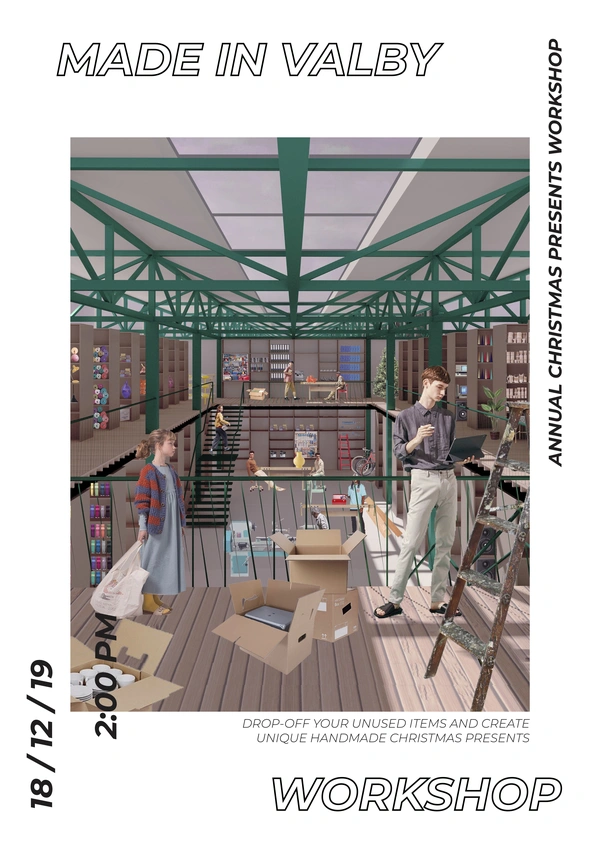
The ‘Made in Valby’ workshop enables residents and tourists to experiment with concepts of self-sufficiency and conscious resource consumption on a neighbourhood scale. Inspired by the many ‘take and leave’ genbrugsstations around Copenhagen, the material bank offers space for objects to be left and taken for free to reuse, disassemble and up-cycle.
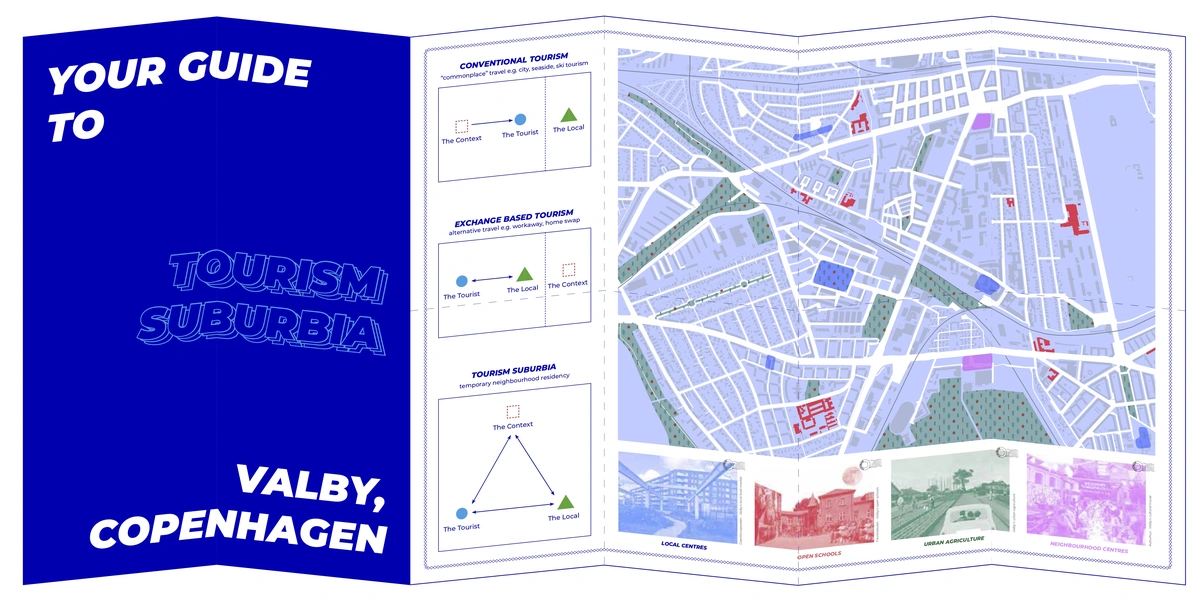
Local produce, youth and educational centers, recycling stations, open workshops, etc. are understood as community landmarks for both residents and visitors. Connected through a network platform of local initiatives, businesses and institutions, they facilitate community well-being and local economy.
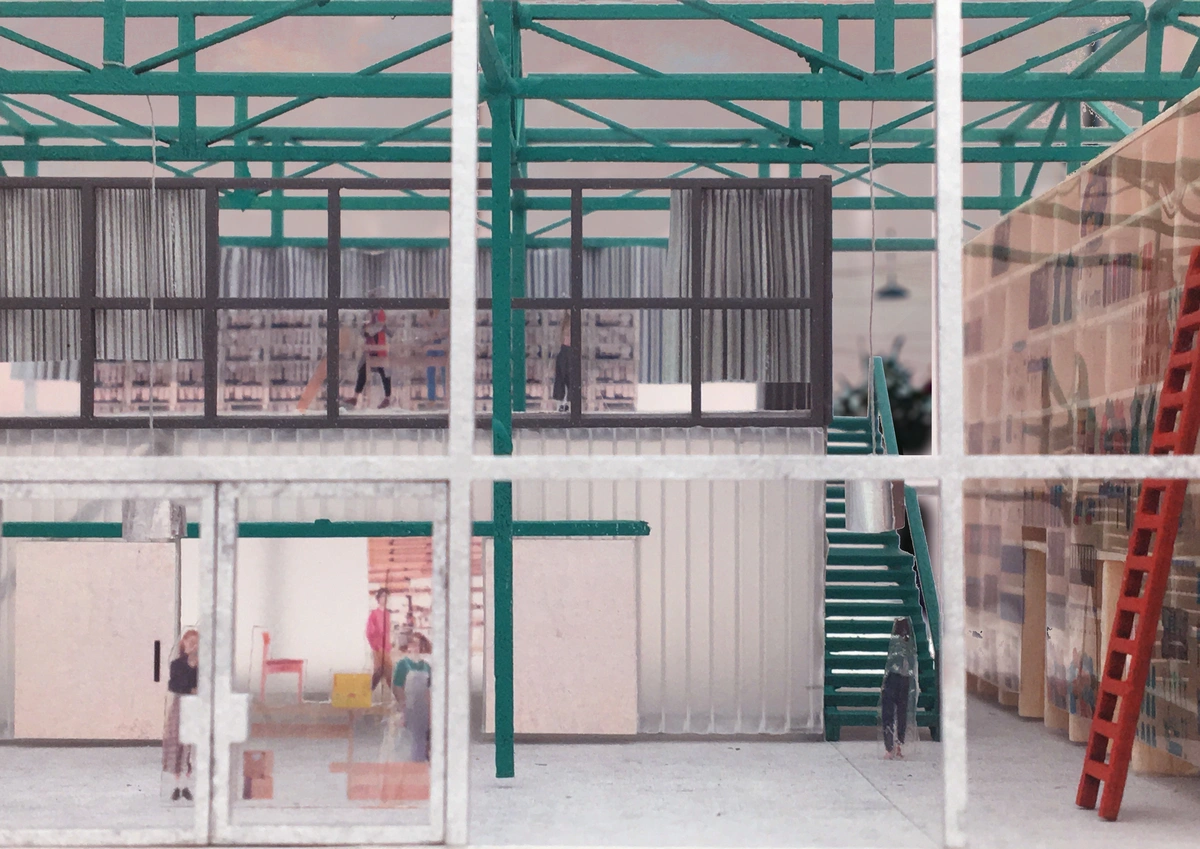
The open workshop is organised to accommodate a large gallery space that can host diverse production methods.
A small atelier workshop space downstairs interacts with the open workshop through large sliding doors, while the shared space on the first floor is dedicated to the design process.
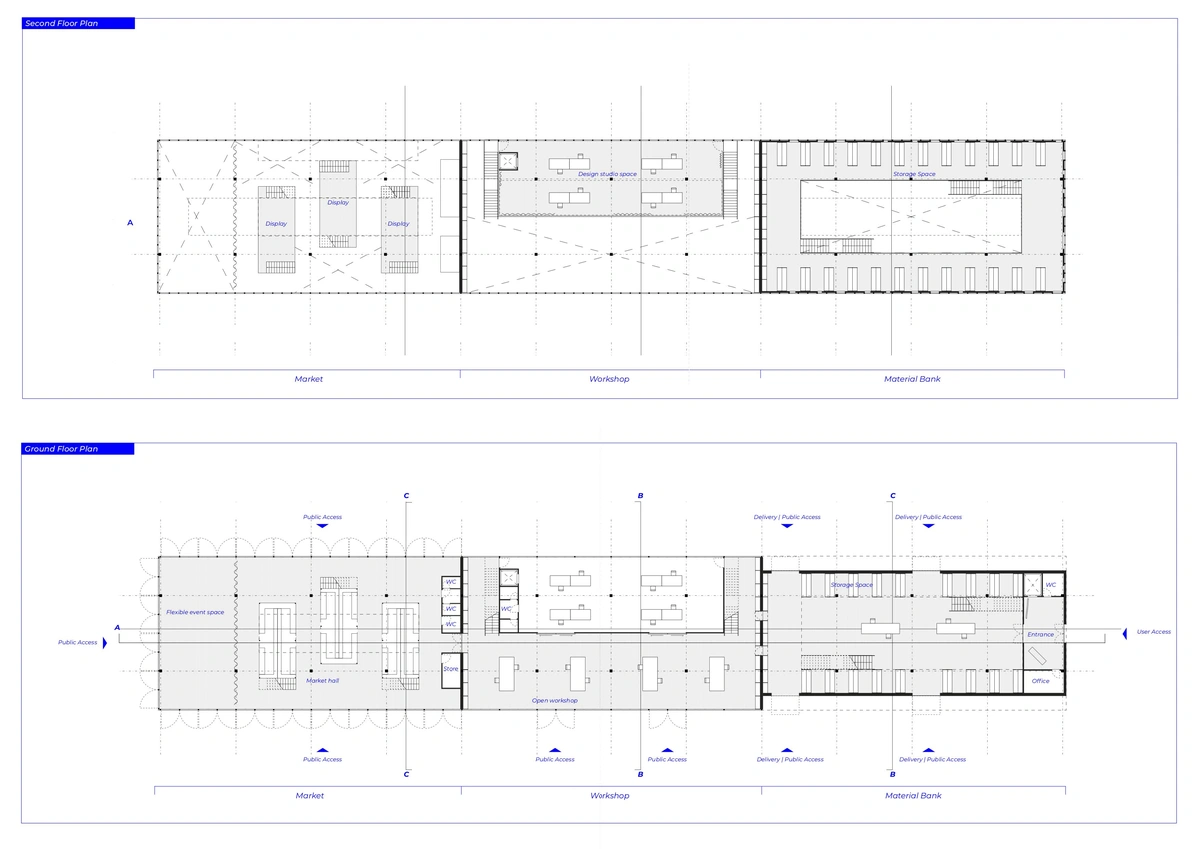
A single volume envelopes three spaces that define the stages within the programme; a material bank, an open workshop and a market, which both users and visitors can be guided through.
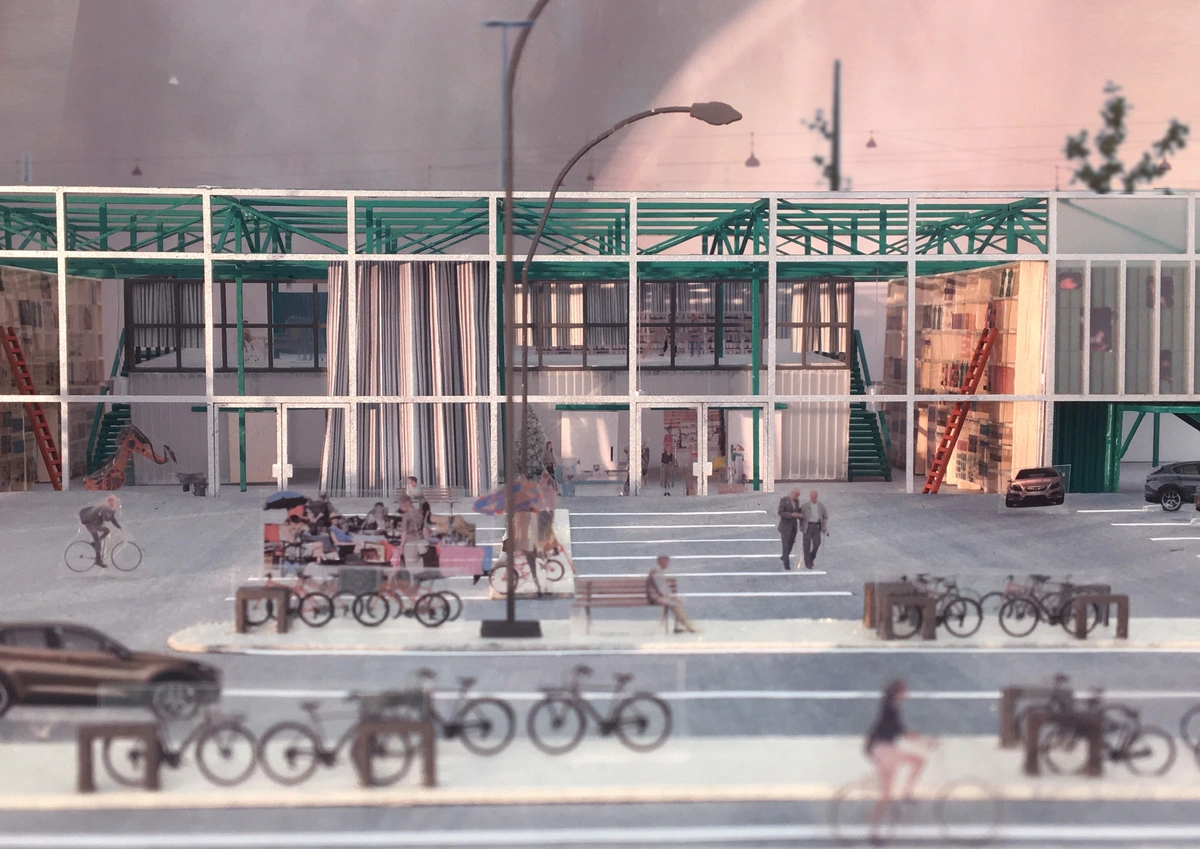
Providing the infrastructure that enables locals and visitors to build up a de-growth tourism might be the transversal that connects the two parallel realms, and triggers a transformation of conventional consumption behaviours.
Serina Kitazono is an architect, urbanist and illustrator based in Copenhagen, having graduated from The Royal Danish Academy and Sheffield School of Architecture. She has previously worked in both London and Copenhagen. Kristin Lazarova is an architect and urban practitioner based in Berlin, having graduated from the Royal Danish Academy and University of Stuttgart, previously collaborating with architecture and urban planning studios in Stuttgart, Zurich and Berlin.
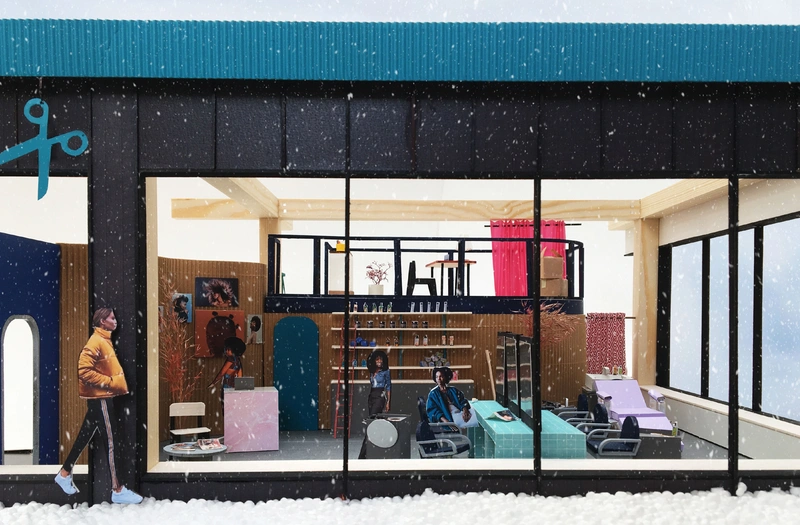
Welfare City Futures explores the subject of growing immigration to Finland as a perceived burden of the Nordic welfare model. Collaboration with Linnea Frej
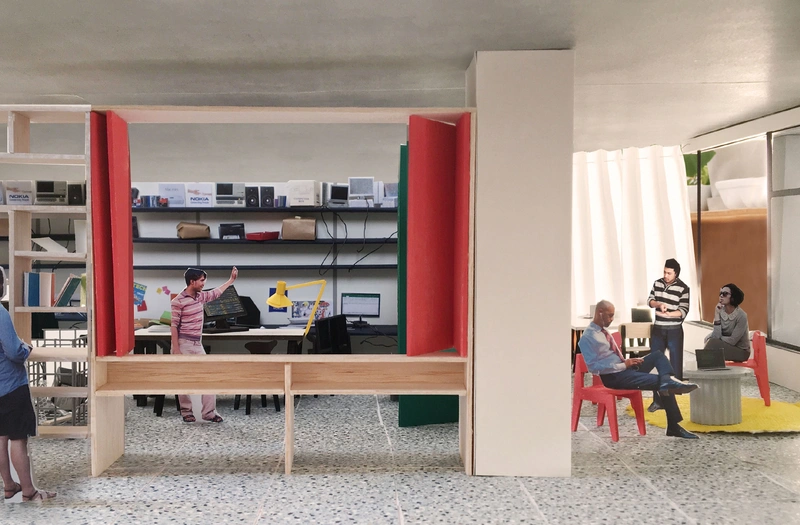
Contextualising Welfare City Futures in the theory and research of ‘Arrival Cities’ and Making Heimat manifesto, we emphasised the
workplace as an engine of integration and developed new working environments for both immigrants and Finns.
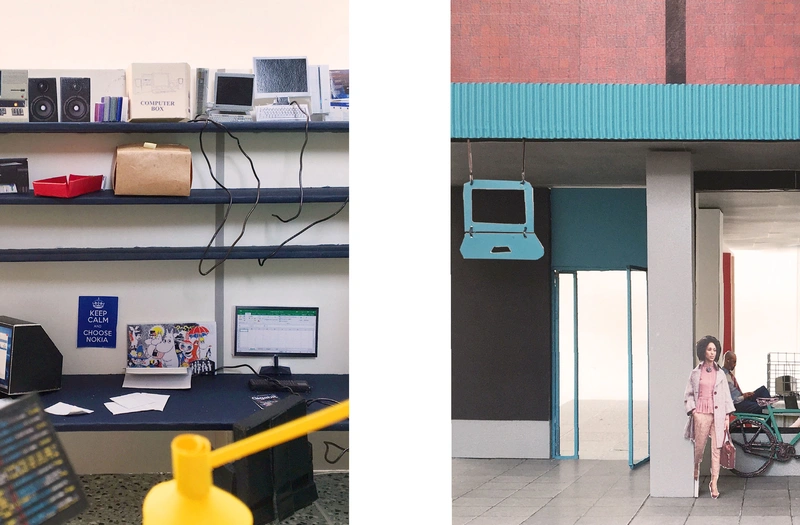
Groups of small scale businesses, clustered in guilds, are welcomed in empty office ground floors, as well as new builts.